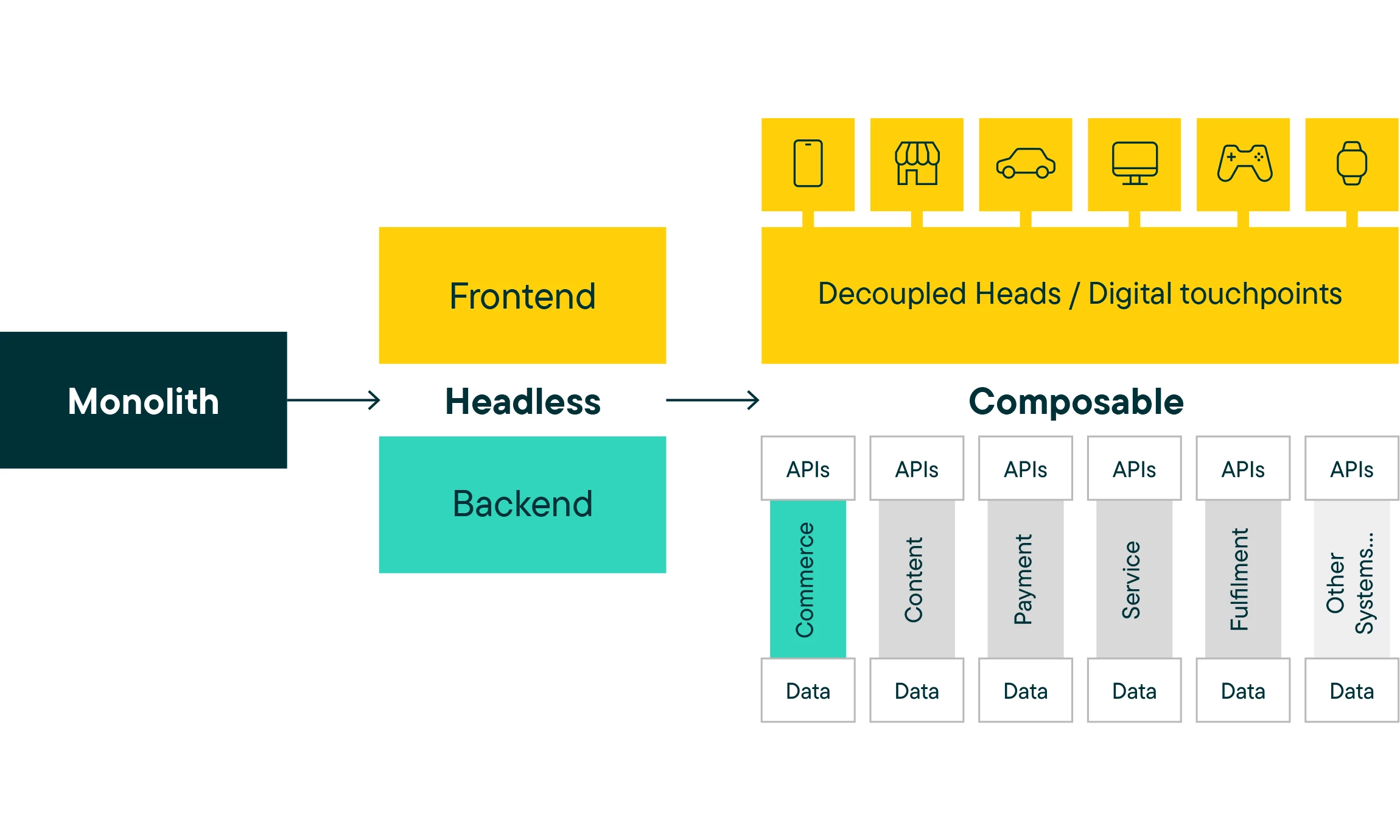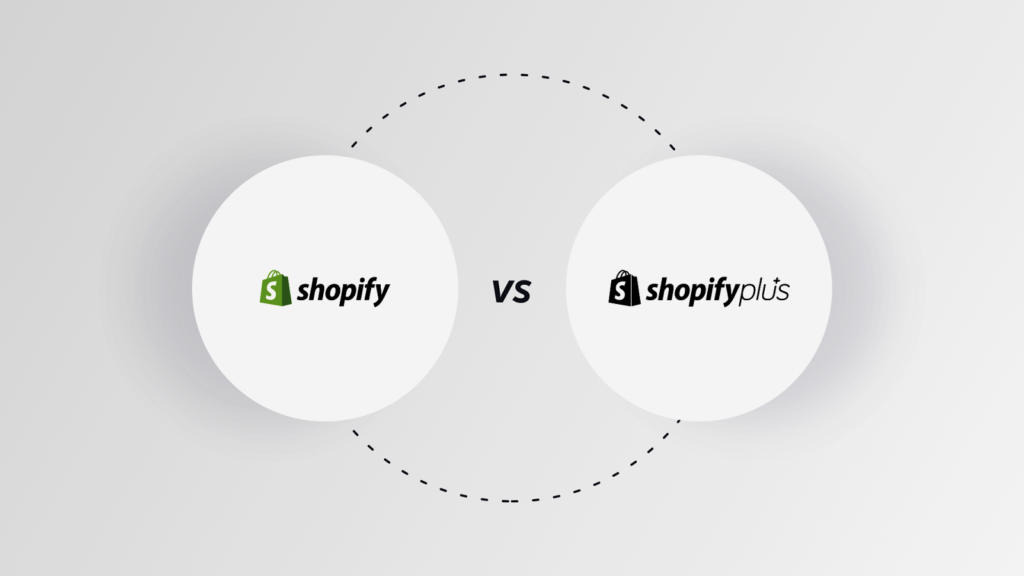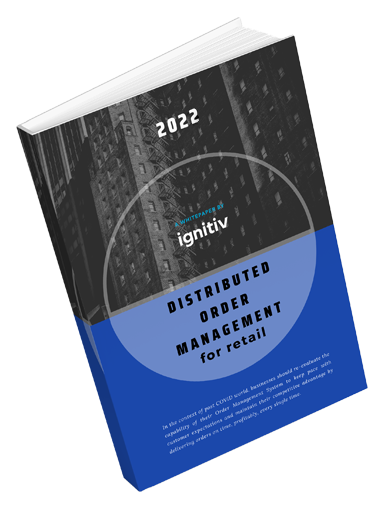What’s Coming up Next in Composable Commerce – Opportunities, Trends, and News
A recent survey from Elastic Path reveals that 72% of the retailers in the US have already started using composable commerce in some capacity. Around 21% are considering it for adoption in the next year or so.
This bodes well when we consider that composable commerce allows for putting together an eCommerce framework that is scalable and flexible. This allows for laying out a concrete eCommerce personalization strategy above all and subsequently realizing better customer experience management (CEM).
But as the composable commerce space evolves, it’s prudent to keep track of what’s transpiring in the market and what trends could drive further increase the pervasiveness of this approach to eCommerce.
Trends and Opportunities in Composable Commerce
1. Cloud-Native as the Preferred Choice
B2B firms want to address the challenge of legacy and siloed systems, and rightly so. These systems pave the way for fragmented processes, accrue high operational costs, and usher in rigidity that’s detrimental to facilitating an excellent user experience.
As such, it’s only wise to introduce composability and transition from on-premises to cloud-native deployments for auto-scalability. This helps the case for composable commerce becoming more pervasive as firms can ensure maximum flexibility, scalability, and agility. This is especially critical for eCommerce operations where peak seasons could entail fluctuating provisioning of computing resources.
This setup will enable companies to deliver a more smooth and uniform experience across all channels, including desktop, mobile, and social media. When it comes to B2B firms trying to ramp up the flexibility and agility of their operations, cloud-native and composable is the way to go.
2. The Growing Prominence of the API-First Approach
APIs, or application programming interfaces, have been driving the creation of unified, seamless digital experiences for many years now. A business’s system components can pull data from one another thanks to an API, enabling interoperability.
APIs are key to the success of composable commerce because they make it possible for different system components to communicate with one another and connect disparate parts. This way, they support the composable commerce approach in unifying disparate elements and delivering a tailored and seamless eCommerce experience.
Today, using APIs as efficient integration tools is practically a given. However, the true value comes from reorganizing development and deployment plans for businesses around the usage of APIs. Here is where the API-first strategy comes into play. This strategy can enable eCommerce companies to quickly adjust to shifting market trends and client expectations while maintaining an edge over rivals.
Source: https://commercetools.com/blog/how-do-composable-headless-and-mach-compare-the-key-differences-explained
3. The Evolution of Microservices
The underlying code base grows larger and more difficult to maintain and manage as eCommerce applications add more and more capabilities. This is where microservices come into the picture. Essentially, the microservices architectural strategy constitutes small, independent services instead of a rigid, monolithic codebase. These microservices are linked together via APIs to enable frictionless communication.
As it stands, microservices help enterprises attain “true composability.” Lately, the microservices ecosystem has observed advancements in the name of better observability tools, Kubernetes’ prowess, serverless boom, AIOps introduction, and more. Result? They’re now more agile, better equipped to address faults, and ideal for faster development and time-to-market.
All this weaves into microservices’ applications, one of which is composable commerce. So, it would be prudent for businesses to keep a close eye on how this architectural paradigm evolves and influences the eCommerce space.
4. Better Prospects of Efficient Migration and Use of Composable Commerce Solutions
Although many firms are aware of the long-term benefits of composable solutions, they do not have the resources to make the requisite changes right away. This has also made the full adoption of this technology difficult. However, there are options for businesses that want to gradually transition to composability.
Ad-hoc migration might be one such technique, allowing organizations to benefit from a composable commerce architecture without having to make any modifications to their software or middleware. In the same vein, the support provided by technology partners will be critical. As more and more organizations look to tap into this approach to facilitate improved customer experience management, the role of expert partners guiding through the migration, implementation, and support roadmap will be critical going forward.
Conclusion
Composable commerce is a paradigm shift in the way that businesses think about, strategize, and organize their eCommerce ecosystem. It replaces rigid off-the-shelf point solutions that may meet a specific set of requirements with a modular framework that enables quick response to change and innovation. Most importantly, it enables businesses to realize success with their eCommerce personalization strategies.
However, while adopting composable commerce, businesses will have to be accepting as well as cautious of the changes to their infrastructure. This is where Ignitiv can help. With our personalized eCommerce solutions and composable and headless commerce expertise, we can overcome and alleviate the transformation challenges and help you tap into the eCommerce market opportunities. Connect with us today to learn more.








